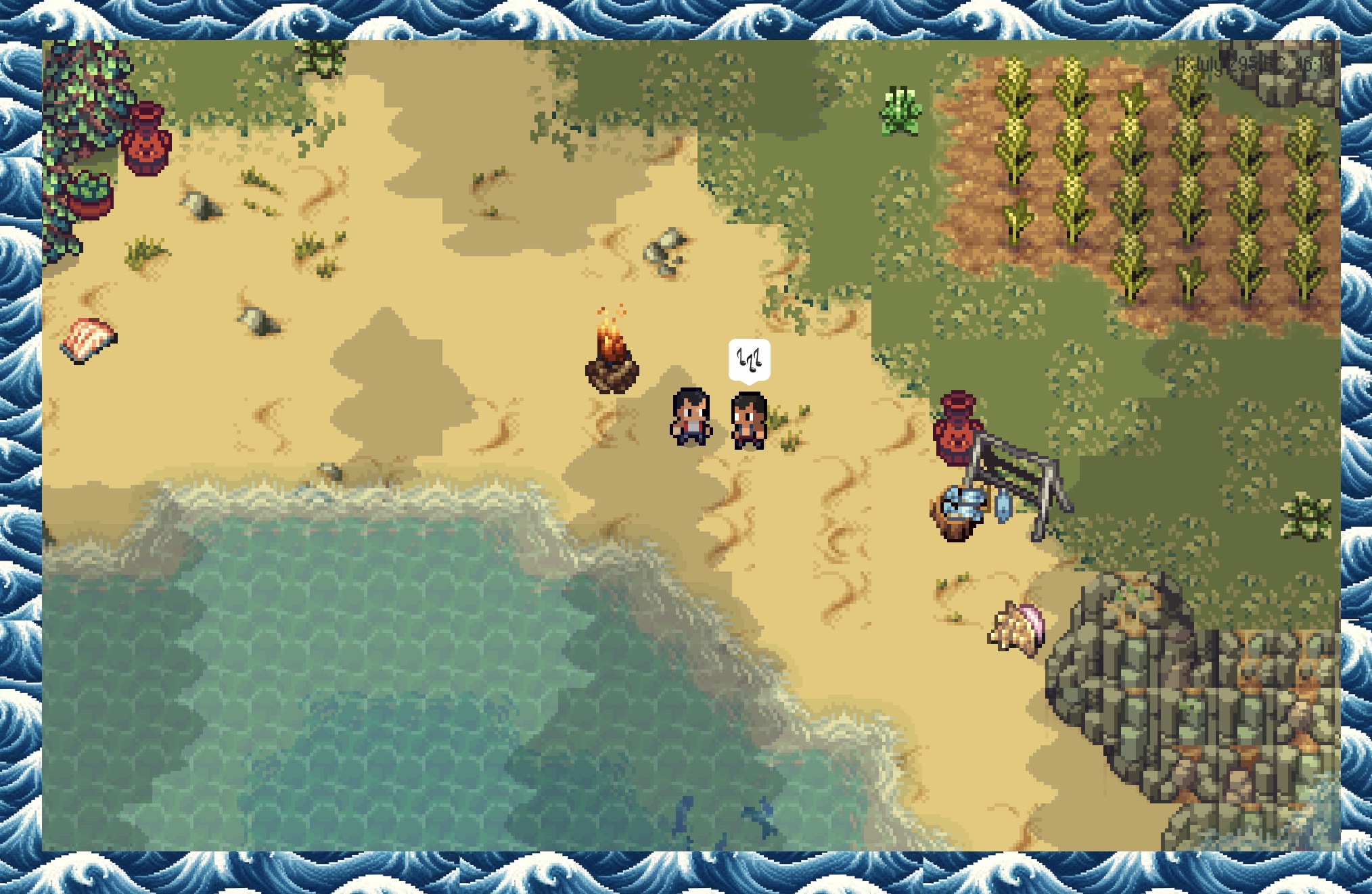It’s been a month of experiments, reader! If you love culture and traveling in our spaces, join our new Live series, Monuments and Mythologies of Ancient Egypt to explore and discuss them together! You’ll travel an itinerary of the major ancient Egyptian monuments, just like you would in real life if you were there.
The next live tour is 24 May at 10:00 AM Pacific North America time. Click Join or reply to this email for the Zoom link.

We’ll start in Old Kingdom Egypt at Giza and Saqqara, then transition to Upper Egypt at Luxor and Abu Simbel with their elaborate temples, and end at beautifully-decorated tombs in the Valleys of the Kings and Queens. Throughout, we’ll discuss why the Ancient Egyptians built these incredible monuments and how their thinking about the afterlife evolved over millennia.
If there’s interest, the goal is to bring in experts that study and take care of these monuments to host live talks about the 3d scans in the future. We’ve tried it a few times so far, and it’s always been fun–people have really good questions! I wish I could answer more of them.
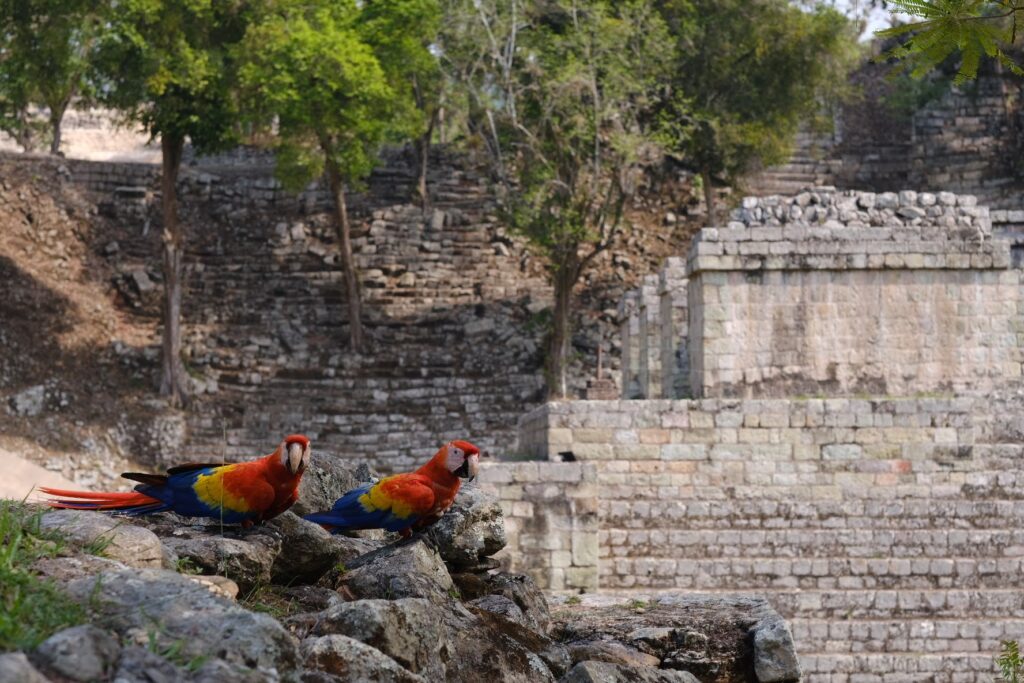
PBS Feature at Copan Ruinas with “In the Americas“
Also coming up soon, we’re excited to announce an upcoming feature with 3d scans of the Maya Temples at Copan Ruinas in the PBS series, In the Americas! You don’t want to miss it. Follow along at their website and on PBS.
The site at Copan and history is seriously incredible–the Maya temples were built outward like Russian nesting dolls, so the excavations are tunnels inside the temples to older, lower layers. I lived in Copan working in the tunnels for many months, and I think you’re going to love your virtual voyages at this site!
The episode should come out soon this summer after we finish some final 3d renders from the LiDAR data and add a few more artifacts to the 3d scans.
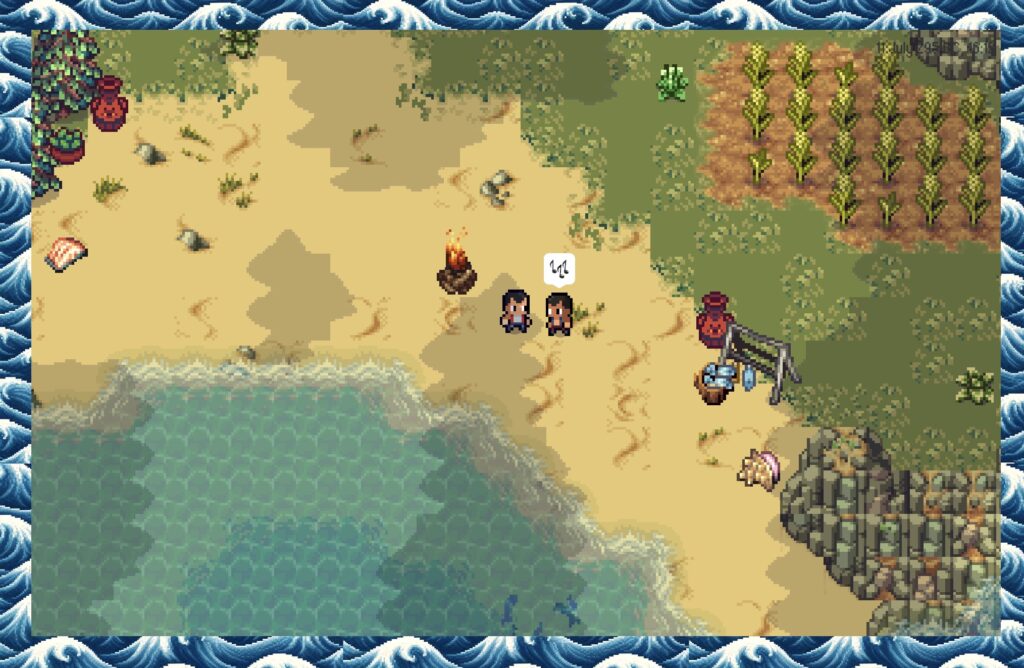
From the Lab: C.I.V.S. – Ancient Civilization Simulations
Lastly, as an experiment, an AI researcher at [redacted big tech company] and I have been working on a new project to simulate the ancient civilizations we study, but in a 2d format. We have an early release of these available with simulations of historical recreations of farms, on an ancient Greek island, a Roman villa in Latium, and an Egyptian farm in Thebes. Check them out now
We believe that using generative technologies will not only help us teach about the past but understand and gain new insights about the past by using agent-based modeling. Our most ambitious goal is to create a functional simulation of ancient Eurasia, then the Americas and Pacific islands.
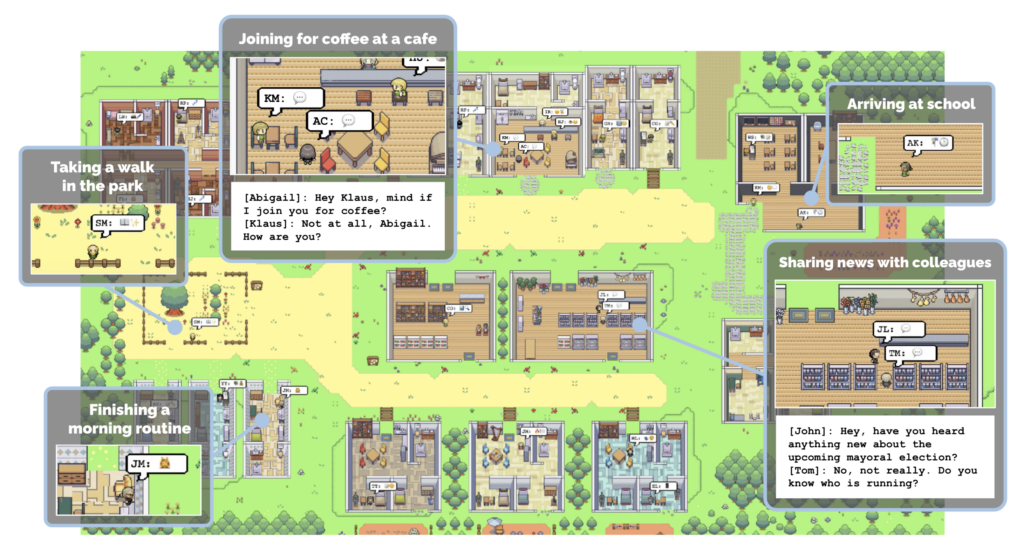
With the advancements of large-language models, this type of simulation becomes much more important. We were inspired by a team of researchers at Stanford and Google that used an early version of ChatGPT to create a simulation of a small town where the non-player characters interact with each other and plan events together as a social simulation. Their town was called Smallville.
In Smallville, each character has a prioritized memory stream so that when, for example, two characters meet in the park and discuss their lives, they remember the conversation and the goals and ambitions of each other when they meet again in the future.
While complex to implement, this has real value for creating simulations of characters from the ancient world using generative technologies.
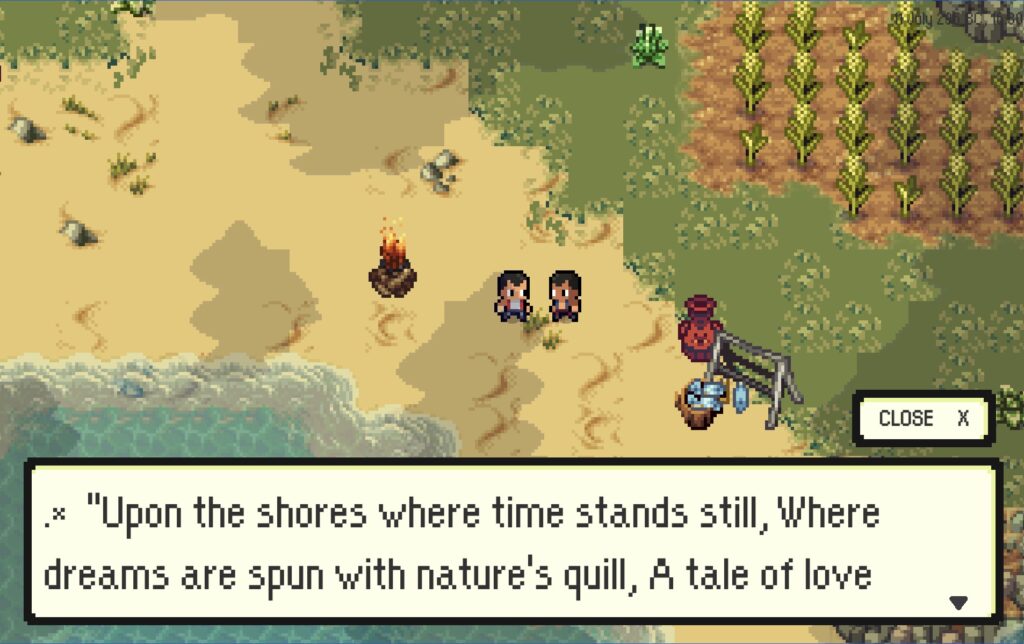
On the beach of the island of Kos in the ancient Aegean, the shepherd Lycidas rests on the shore, practicing his songs, just like the character from the Greek lyric poet, Theocritus. His wife, Simaetha, is also featured in Theocritus’s Idylls, and together, they manage the small farm on the island.
In the experiment so far, the gameplay is character-driven, and the non-player characters, or NPCs, converse with each other and with you, the newcomer visiting their farm, if they want to. Their behavior is non-deterministic and managed by a generative model, given the demands of taking care of their farm.
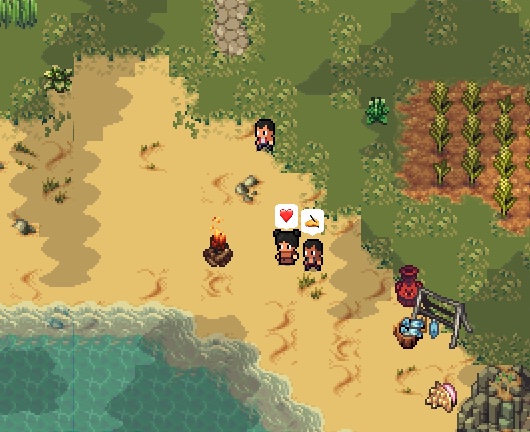

As a result, the characters fall in love with each other, spend time together or go out on their own. They compose songs, rest on the beach and take in the view. They spend time praying to their household deities and taking care of their vineyard.
Their freedom and self-reflection yields a free-explore conversational experience of ancient world literature and mythology that compliments our other guided tours of real-world monuments.
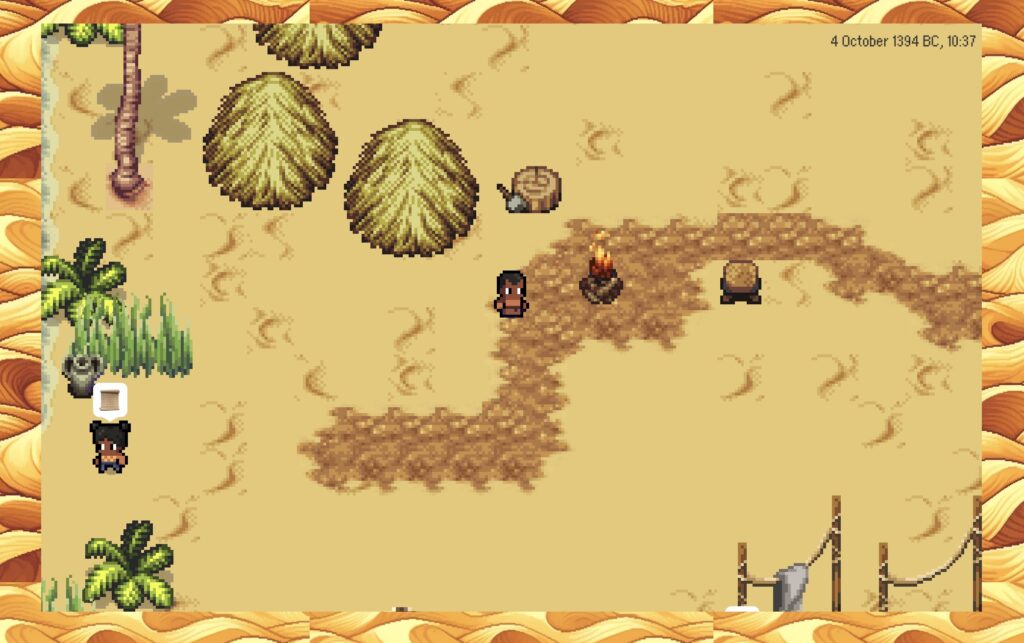
In Kheti’s farm in ancient Egypt outside Thebes, a young family raises Wheat and Barley with irrigation channels, weaves their own fabric, and makes offerings to Khonsu at a nearby temple, based on the real-world Khonsu Temple in Karnak. The characters and their activities reference the real-world Satire of the Trades that details much of the lives and activities of Egyptian farmers and tradespeople.
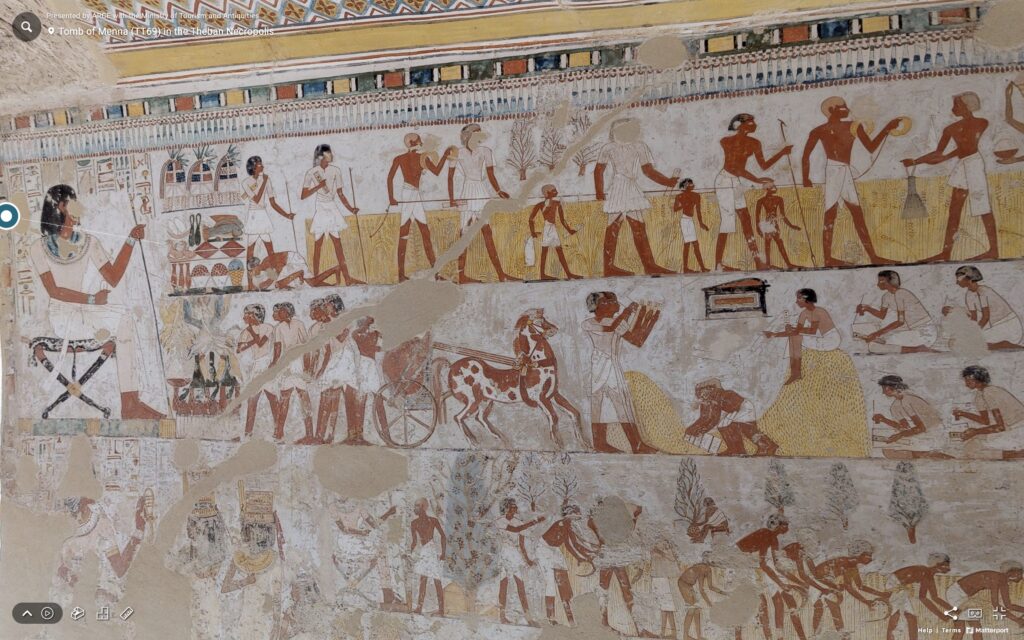
See for yourself at https://my.matterport.com/show/?m=vLYoS66CWpk&ss=9&sr=-1.46,-1.51
You can compare the farming scenes in the Tomb of Menna in the Valley of the Nobles nearby to where Kheti’s fictional farm is set. Workers tend to the wheatfields and harvest similarly to the way that Kheti and his family do in the game world.
We chose pixel art this experiment as a type of nostalgia that references that pastoral tradition of literature, which has seen a kind of manifestation in the indie game development community, with games like Stardew Valley and Harvest Moon, or even more recently the excellent Japanese Rural Life Simulator.
Next, we’re reconstructing entire cities, starting with Rome, and letting more NPCs run amok and manage mayhem together–with the goal to simulate an entire civilization as around 500 NPCs. More on this soon!
While the pixel art 2d games aren’t going to be interesting for everyone, we hope that the character simulations will bridge into our 3d captures in the future.



